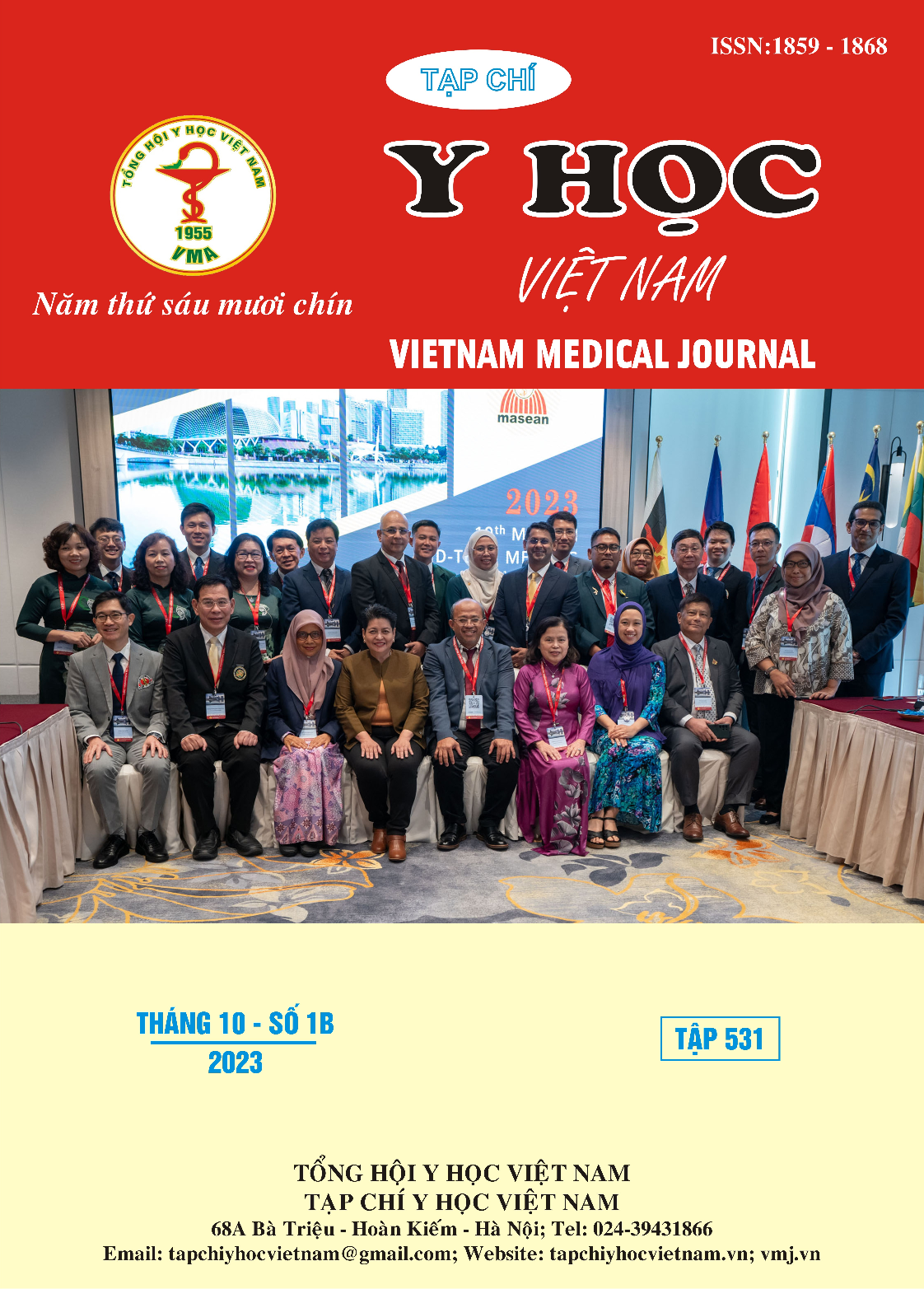OBSTETRIC OUTCOMES OF PREGNANT WOMEN WITH OLIGOHYDRAMNIOS IN PRETERM PREGNANCY AT THAI NGUYEN NATIONAL HOSPITAL
Main Article Content
Abstract
Oligohydramnios is a case of high risk pregnancy, decreasing amniotic fluid level caused directly affect the development of the fetus, increased the risk of fetal distress, increased rates of perinatal mortality and neonatal congenital malformation. Objectives: To comment on obstetric outcomes of pregnant women with oligohydramnios preterm pregnancy at Thai Nguyen national hospital in 2022. Subjects and research methods: Descriptive cross-sectional study method on 148 pregnant women with oligohydramnios in gestational age from 28 to under 37 weeks who were treated at Thai Nguyen national hospital from 01/2020 to the end of 12/2022. Results: The mean maternal age was 28.4 ± 5.8 years old. The mean gestational age at delivery was 34.4 ± 2.6 weeks. There are 64.2% cases of pregnant women ending the pregnancy when there is no labor. The rate of cesarean section was 79.1%, vaginal delivery accounted for 20.9%. The cause of cesarean section due to AFI ≤ 28mm accounted for 44.4% and fetal distress 15.4%. The rate of meconium-stained amniotic fluid was 24.8%. The infants with postnatal respiratory failure accounted for 14.2% of cases and perinatal mortality was 10.1%. Conclusion: Oligohydramnios has adverse effects on perinatal outcomes.
Article Details
Keywords
oligohydramnios, obstetric outcomes
References
2. Trần Danh Cường Phạm Minh Giang (2016), "Nghiên cứu một số nguyên nhân gây thiểu ối ở tuổi thai từ 13 đến 37 tuần tại Bệnh viện Phụ sản Trung ương", Tạp chí Phụ sản. 13, tr. 76-9.
3. Phạm Thị Thu Hồng, Võ Đông Hải và Nguyễn Trung Kiên (2018), "Tình hình, mức độ thiểu ối và một số yếu tố liên quan ở sản phụ mang thai đủ tháng tại bệnh viện Sản Nhi An Giang", Tạp chí Y dược học Cần Thơ. 16, tr. 5 - 12.
4. Bộ Y tế (2015), "Thiểu ối", Hướng dẫn chẩn đoán và điều trị các bệnh sản phụ khoa, Hà Nội.
5. L. Hou và các cộng sự. (2020), "Delivery mode and perinatal outcomes after diagnosis of oligohydramnios at term in China", J Matern Fetal Neonatal Med. 33(14), tr. 2408-2414.
6. H. Ding và các cộng sự. (2022), "Correlation of amniotic fluid index and placental aquaporin 1 levels in terms of preeclampsia", Placenta. 117, tr. 169-178.
7. L. Figueroa và các cộng sự. (2020), "Oligohydramnios: a prospective study of fetal, neonatal and maternal outcomes in low-middle income countries", Reprod Health. 17(1), tr. 19.
8. M. Molla và các cộng sự. (2022), "Magnitude and associated factors of adverse perinatal outcomes among women with oligohydramnios at 3rd trimester at University of Gondar comprehensive specialized hospital, North West Ethiopia", Front Glob Womens Health. 3, tr. 958617.


